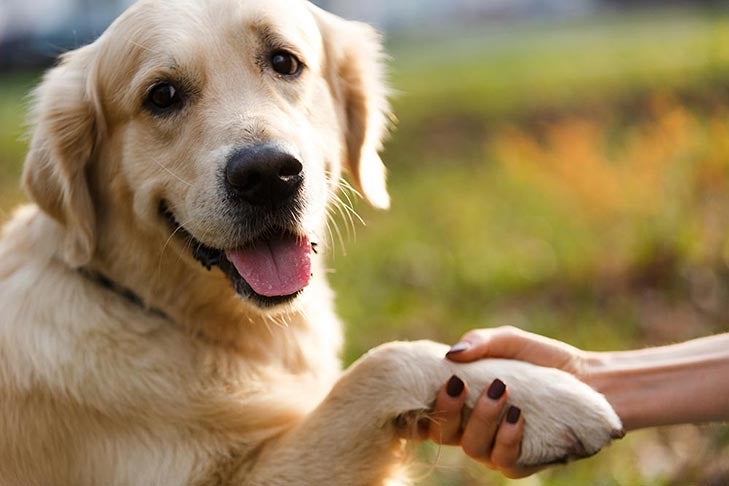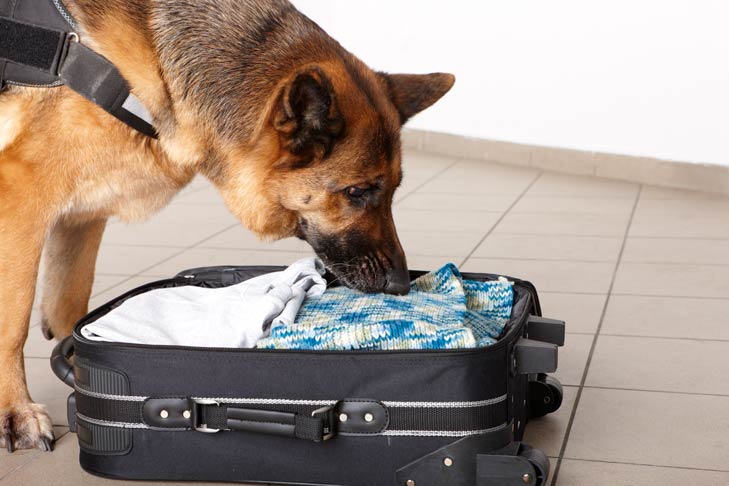Dogs: Super-Savvy, Socially
Although every dog is unique, there is enough evidence to indicate that species-wide one of the really special things about dogs is how well they understand humans. “They are very attentive to and responsive to us, which is a great social cognitive skill,” Dr. Alexandra Horowitz, head of the Dog Cognition Lab at Barnard College, Columbia University, told me.
Researchers don’t entirely agree on why dogs are so socially savvy. The prevailing view is that their social intelligence is evolutionary: that over the thousands of years since wolves entered the human sphere and started to morph into the pets we know today, breeding has favored qualities that make dogs good companions to humans, such as friendliness and an affinity for us, which make them good at reading our behavior.
There’s also a theory that each dog simply acquires his or her social intelligence through the sheer amount of time spent around humans – that’s why puppy socialization is so important.

The answer might be a combination of these two factors – of evolution and socialization. Either way, the result is a species with a remarkable fondness for and understanding of humans.
This manifests in many ways. Zachary Silver, a Ph.D. student in the Comparative Cognition Lab at Yale University, studies the way dogs interpret the social world. “They’re extremely skillful at following our communicative cues, especially our points and our gazes,” he told me. “But it even goes a step further: they pay really close attention to how we interact with each other.” For instance, there’s evidence to suggest that, in some contexts, dogs will notice whether a human is helpful or unhelpful, and favor the helpful person.
Silver’s current research focuses on dogs’ understanding of humans’ perspectives: he’s working to build on previous findings indicating that, in some contexts, if food is hidden such that a dog sees one person observe the hiding and one miss it, they are more likely to take a hint about its whereabouts from the person who watched it being hidden. This suggests that dogs might be drawing all sorts of complex conclusions about what we know and feel.
As Silver observes, “Dogs do pretty sophisticated things regarding understanding our own perspective.”
If humans want to understand what it’s like to be a dog, the nose is an excellent place to start. It’s well known that dogs have a much more powerful sense of smell than humans, but did you know just how much more powerful? As Alexandra Horowitz outlines in her New York Times bestselling book “Being a Dog: Following the Dog Into a World of Smell”:

This sense of smell gives dogs remarkable insights into their environment. Horowitz notes that a tracking dog can tell which direction someone is moving in from smelling just five of their footprints. And in some European countries, dogs’ noses now have the legal seal of approval: if a dog is able to identify a suspect based on smells left at the crime scene, that evidence is admissible in court.
This sensory difference is important because it gives us information about how dogs experience and interpret the world. Humans are primarily visual creatures, navigating by sight. Dogs, by contrast, process the world through their noses, and thus have all kinds of scent skills that are difficult for humans to conceive of.
By applying a little imagination about what it might be like to live in a scent-based world, we can better appreciate dogs’ cognitive abilities. For instance: dogs do not recognize themselves in mirrors, which had been thought to indicate that they don’t possess self-awareness. But Dr. Horowitz has demonstrated that dogs do recognize changes in their own smell, demonstrating “perhaps something somewhat like self-awareness,” she told me.
Why Dogs are Smarter Than You Think
Why do some people underestimate dogs? Until the 1900s, there was no way to understand how dogs’ brains work or what they were able to comprehend. In the 20th century, there were several studies, including taking s of different dog brains and comparing them. Studies have shown that dogs display many behaviors associated with intelligence, such as:
Dogs have receptive language that is comparable to 12 to 18-month-old infants. Their mental capabilities are on the same level as a two-year-old human! On average, a dog can learn around 165 words. Dogs that are above average are capable of learning up to 250 words. While commanding your dog to do tricks, you can use any language as part of your training. It’s entirely possible to train your dog in several languages to do the same tricks or commands. While their language abilities are substantial, their level of understanding is beneficial to humans for plenty of reasons.
Border Collies can fetch sheep and corral them, which requires a high level of intelligence. This is due to them having a high and adaptive IQ. Border Collies can “fast map” like humans. Fast mapping is forming a vague hypothesis of a new word after only hearing it once.
These dogs have a keen ability to read humans and have incredible communication skills. Golden Retrievers make excellent choices for working as service dogs and hunting dogs. They are also great for emotional support due to their responsiveness to human emotions. Not all dogs have this strong of ability, but neither do some humans.
German Shepards can learn and retain new skills with alarming speed and consistency. One outstanding job this dog can train to do is find bombs. If that doesn’t prove that dogs are intelligent, there’s no way to change your mind. Humans needing assistance from a dog speak volumes about how brilliant they are.
Dog’s brains can vary based on multiple factors such as breed and genetics. How smart are dogs? They are smart enough to aid humans that need assistance in their daily lives. For example, a dog can guide someone with vision impairment to the store. They protect the human from walking into a wall or something more dangerous like a car or ledge. The dog is taught intelligent disobedience, which means it will not obey a command if it sees a danger the human missed.
Aside from seeing-eye dogs, they have other uses, such as helping someone who has Epilepsy. They are trained to get help by retrieving a phone or pressing a life alert button. Another excellent example of how intelligent dogs are is that law enforcement needs their assistance. Dogs have been used for years to help find people in the wake of disasters, search for drugs and even restrain bad guys. Dogs can be trained to detect scents and follow them to the source, detect when a person is in distress, and locate hidden items.
“Both dogs and wolves are playful when they are puppies, but dogs really evolved to living in the human environment and to responding to social cues,” said Boyko, a specialist in the genetics of behavior and an associate professor at the Cornell University College of Veterinary Medicine. “It’s not surprising that the more playful ones exhibit better learning in the domain of learning human words. And it’s not surprising that Border collies, who are bred to respond to human cues, show the propensity to learn words more than other breeds.”
“Gifted” dogs, who have a rare talent for learning lots of words for objects easily, also turn out to be more playful than other dogs, a new study finds.
One thing that can’t be determined from the study is whether the playfulness trait spurred owners to interact more with their dogs and thus teach them more words, said Dr. Nicholas Dodman, a professor emeritus at the Cummings School of Veterinary Medicine at Tufts University, CEO and president of the Center for Canine Behavior Studies and the author of “Pets on the Couch: Neurotic Dogs, Compulsive Cats, Anxious Birds and the New Science of Animal Psychiatry.”
Prior research in humans has shown a link between playfulness and problem-solving abilities, so animal behavior researchers from Eötvös Loránd University in Budapest, Hungary, wondered if the same was true for rollicking pups.
For the evaluation of playfulness the owners were asked to rate their dogs in three areas:
How Intelligent are Dogs, Really? (feat. @TraceDominguez) | Animal IQ
Animal researchers found that pet dogs are capable of much more than just grasping commands like “fetch the ball,” “sit,” and “roll over.” They can remember what they just did, and reproduce that action on cue, says a new study published in the Journal of Comparative Psychology.
“Its the first evidence that dogs are capable of some kind of abstract conceptualization,” Allison Scagel, one of the studys authors and a Ph.D. student at the University at Buffalo when she conducted the research, told Mashable.
Abstract concepts, which are often linked to intelligence in humans, have more to do with emotions or actions as opposed to direct things in the physical world. Very few animals, like dolphins, have the ability to ponder their past and repeat recently performed actions. This study is the first of its kind to show that dogs also have this potential. “It’s the first evidence that dogs are capable of some kind of abstract conceptualization.”
Scagel’s team first trained the dogs to perform basic actions, as is done with any dog, such as instructing them to “spin” or “lay down.” Then, they taught the dogs a new cue that eventually became the repeat cue, which is a combination of a hand gesture and a spoken word. They kept on adding more actions to the training, and used the same repeat cue.
“Eventually, it kind of clicked for them that, Oh, this can apply to anything I just did. And Im supposed to repeat the last action that I performed,” Scagel explained.